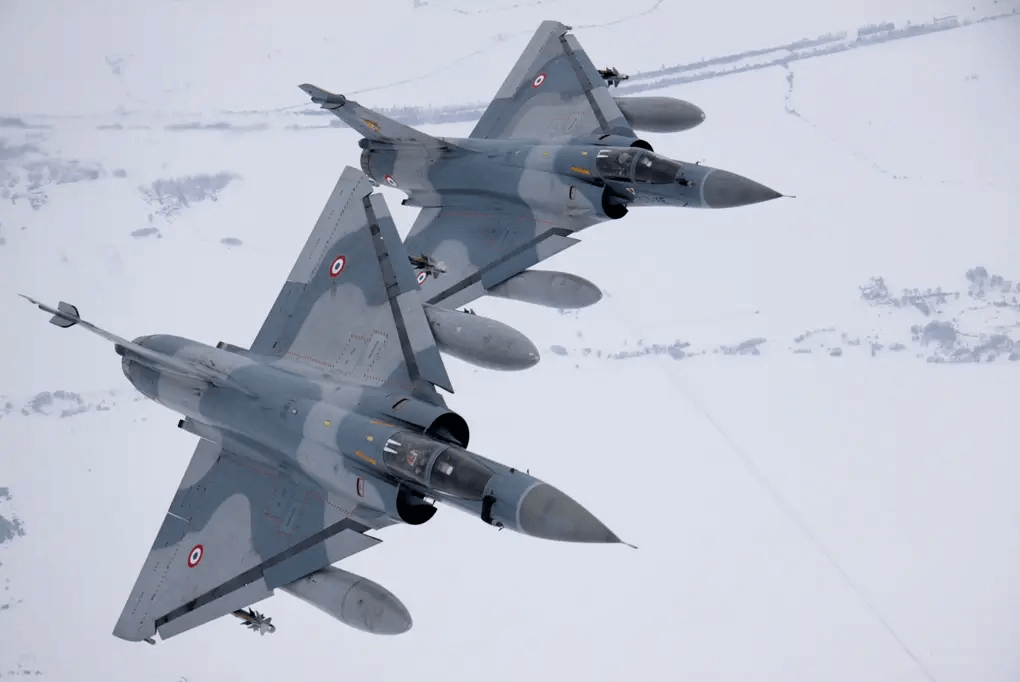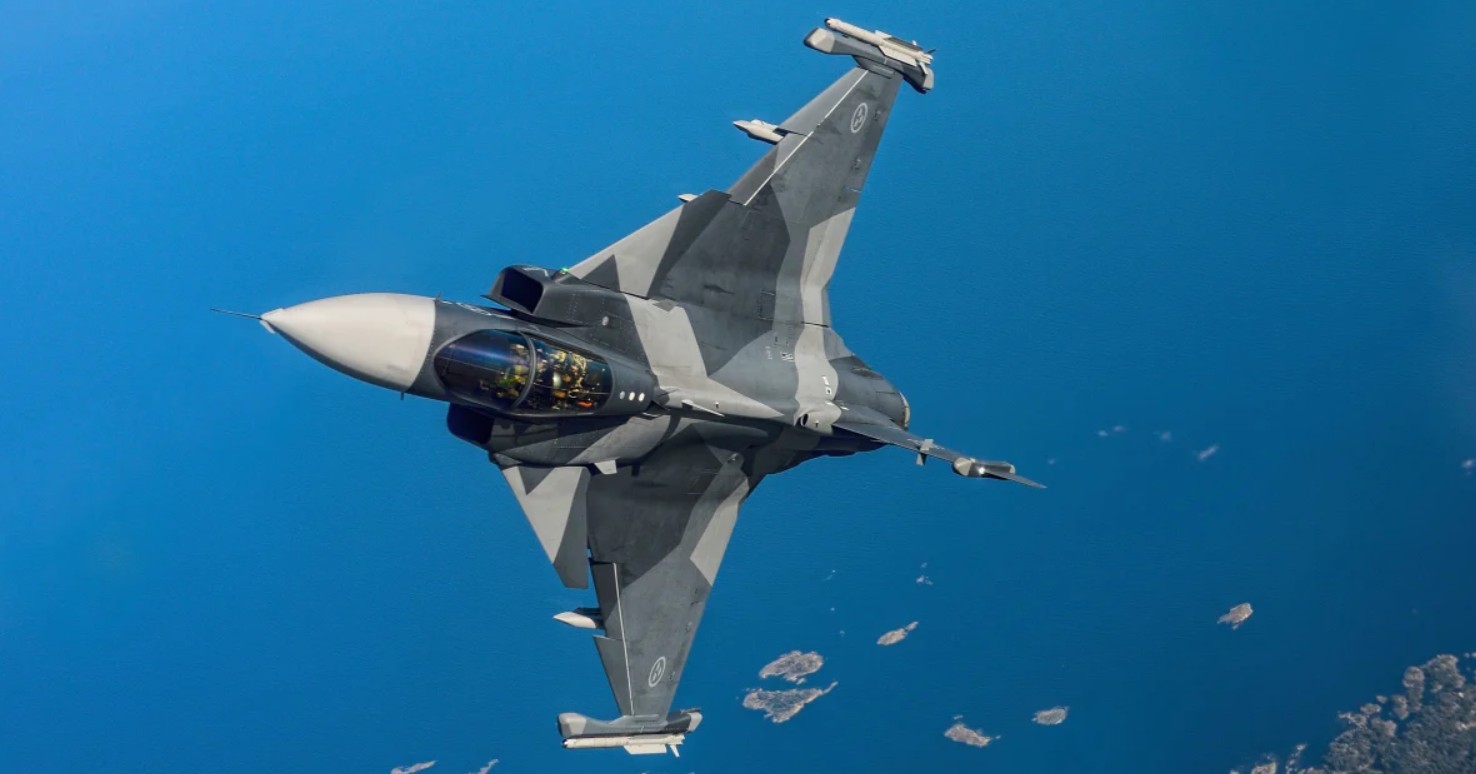Swedish aviation giant Saab had signed an accord with Adanis to manufacture Swedish Gripen, a 4/5th generation single-engine fighter for the Indian Air Force (IAF). The aviation giant signed the accord with an entity that did not have any earlier experience/expertise in the field of aviation.
Nevertheless, the political chemistry of Indian industrialist Gautam Adani encouraged the Swedish aviation giant to sign on the dotted line hoping that the political clout of Adani would ensure that IAF would be ‘forced’ to buy Gripen.
Needs Of The Indian Military (Not IAF)
One of the prominent platforms needed to maintain supremacy/superiority over the militaries of our two ‘unfriendly’ neighbors in the West and North is the strike element of air power. The strength of strike elements of the Indian military in the form of fighters has been diminishing at an alarming rate since the 1990s.
After the induction of Su-30 fighters, successive governments, including the present one at the center, have deliberately ignored to look into a catastrophic and rapid reduction in fighter squadron strength.
The current government’s purchase of 36 Rafales under the Inter-Governmental Agreement is not even a drop in the ocean. ‘Make in India’ is a great idea, but it will take time to fructify.
The gestation period of any aircraft, modern fighters, in particular, is usually between 15 to 20 years from drawing board to the flight line of an operational fighter squadron. No further elaboration is needed. Merely look at the timeline of F-35, Su-57, and many other programs.
Offers By Foreign Vendors
Since the manufacturing giants, namely, Lockheed Martin, Boeing, Dassault Aviation, and the Russian establishment producing modern fighters know the IAF inventory of fighter aircraft better than an Indian, all of them have been trying to woo the Indian government at the center since the mid-90s.
However, the procurement has gone ‘dead slow,’ and the government has failed to realize the gravity of the situation. The defense procurement process currently being followed for weapons acquisition is the ultimate impediment.
Without any intention to digress from the main issue, quoting the classic case of Dassault’s offer to the Indian government in early 2004 would suffice to establish the credentials of individuals responsible for weapons acquisition. Sri Rao Inderjit Singh was minister of state for defense and suitably advised on defense matters by a ‘no name’ Defense Secretary.
Chuck Eddlestone, the CEO of Dassault, flew into India with his team with the offer of Mirage-2000-5 combined with Rafales, then under development. The offer was simple. Dassault was discontinuing the Mirage-2000 production line.
France offered India the entire production line technology transfer, including the aero-engine for the Mirage-2000-5. The offer was further buttressed with certain numbers of Rafales at less than half the price India paid in 2015.

An eminently ignorant minister of state for defense and a self-governing and unaccountable Defense Secretary rejected the French because ‘Single Tender Contracts’ were unacceptable to India.
The French had no time to wait/waste in the long-winded Indian defense procurement process. They wound up the Mirage production line. Unconfirmed reports suggested that Pakistan Air Force was able to corner a huge chunk of Mirage spares through a third party.
A deal on a ‘platter’ was sacrificed on the altar of reckless professional incompetence. Had India accepted the French offer and inducted the Mirage-2000-5 production line, the Indian military would have become the most powerful entity in the region.
For the record, deals of two squadrons each of MiG-29s from the USSR and Mirage-2000 from France in the early 80s were single tender contracts. Hiding behind the ghost of Bofors and declining the French offer was an act of ultimate professional sacrilege.
Role Of IAF Leadership
While all big ticket contracts are governed by political rather than military issues, namely, the performance of the machine, numbers to be purchased, etc., the concerned Service has a major role to play. For instance, in the ongoing debate about acquiring 114 fighter aircraft, one of the major sticking points and differences of opinion within the IAF is ‘should we go for a single or twin-engine fighter?’
This debate is endless, with no firm conclusions. For the advocates of twin-engined fighters, it would suffice to educate them on the fundamentals of statistics and would probably suffice.
A single and twin-engine airplane equipped with the same aero engine having a reliability factor of 0.9 will result in 90% serviceability of a single-engine aircraft on account of the serviceability of the aero engine. However, a twin-engine airplane with the same aero engine will reduce reliability by 81% (0.9×0.9). That is the elementary theory of probability.

To quote endlessly on the survivability factor of a twin-engine versus single-engine, namely, in case of bird-hit engine damage due to enemy action, etc., is merely to create a fog of uncertainty. The utilization and serviceability rate of single-engine fighters is far in excess of twin-engine fighters.
A single-engine fighter is the best option for IAF. Let us not close our eyes and shut our brains to factual data of the rate of utilization of twin-engine fighters Jaguars, MiG-29s, and Su-30s and compare it with the utilization rate of Mirage-2000.
Besides the above, twin-engine fighters have huge radar/heat signatures and are more vulnerable to Surface-to-Air Missiles (SAMs). And finally, the massive increase in fuel consumption led to the creation of additional storage space, thereby increasing the maximum all-up weight of the aircraft.
Conclusion
Indian military in 2023 is in a regressive mode and in dire straits regarding weapons. We must shed the jaundiced and myopic vision of “We will fight with whatever we have.”
The cancellation of collaboration with Adani by the Swedish aviation giant must not be viewed as a business deal that did not fructify. It must be viewed in the context that the so-called and much-touted policy of the government for ‘ease of doing business’ is a farce because of ‘chronic paralysis in decision making.’
There’s no better example of the malaise that has afflicted decision-makers responsible for providing weapons to the Indian military than the inability to provide our soldiers with a world-class personal weapon for nearly 75 years — an assault rifle. It is a case of acute paralysis in decision-making by past governments!
But, as they say, there is light at the end of the tunnel. An Indian soldier is likely to be in possession of a world-class assault rifle, AK-203. Does it not matter that we have taken 75 years to give him a world-class personal weapon? It does.
When will the Indian government pull out its head embedded in sand and open its eyes to look at the world around it?
Indian needs to acquire 114 fighters for the Indian military from foreign vendor/s without further delay. HAL/DRDO will not deliver a world-class operational fighter aircraft until 2040.
- Gp Cpt TP Srivastava (Retd) is an ex-NDA who flew MiG-21 and 29. He is a qualified flying instructor. He commanded the MiG-21 squadron. He is a directing staff at DSSC Wellington and chief instructor at the College of Air Warfare. VIEWS PERSONAL OF THE AUTHOR
- Follow EurAsian Times on Google News




